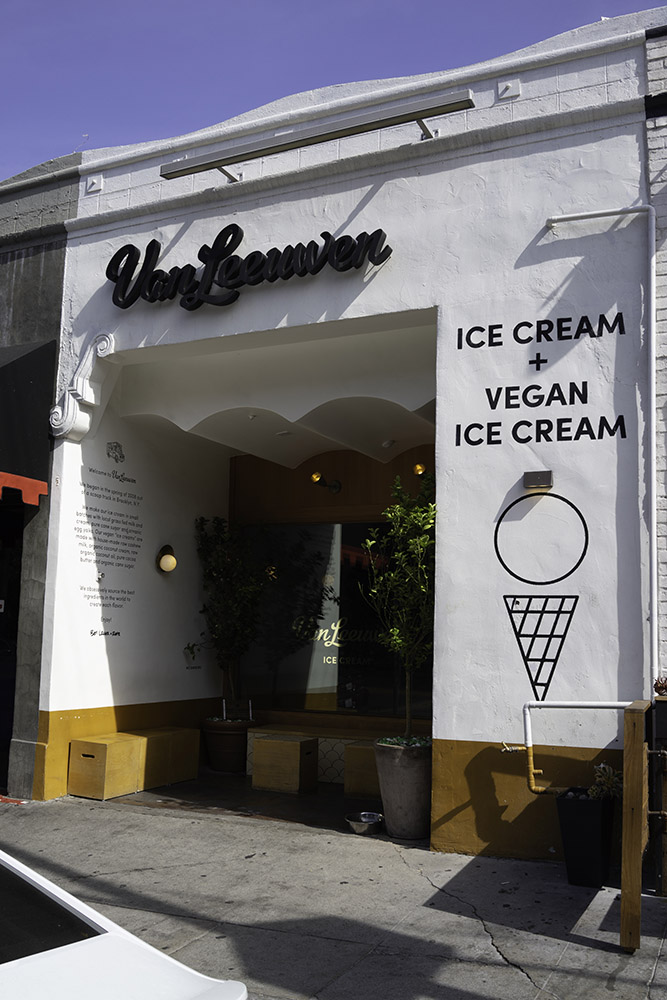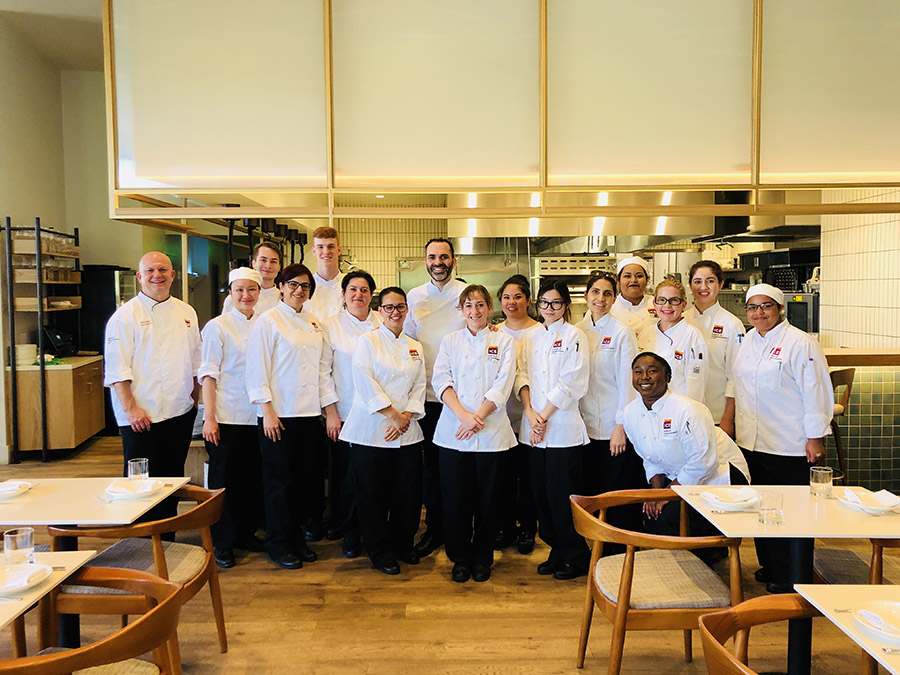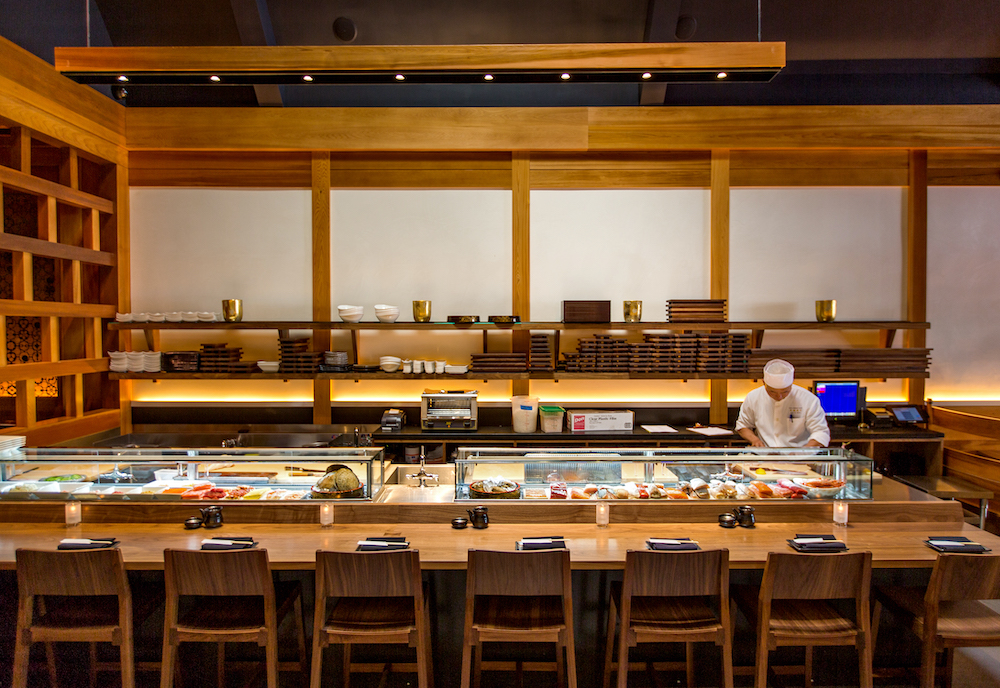Despite Frank Sinatra’s claim, “if I can make it there, I’ll make it anywhere,” a hit New York restaurant does not mean instant success elsewhere — especially across the country in Los Angeles.
Ultimately, transplants learn that it doesn’t matter if a concept “made it” in New York — or San Francisco, Chicago, Mexico City, Paris: Opening in Los Angeles is its own unique challenge.
L.A. outsiders often arrive with East Coast acclaim: David Chang, Christina Tosi, April Bloomfield, Jean-Georges Vongerichten, Dominique Ansel, Will Guidara and Daniel Humm have all opened West Coast operations. In recent years, ramen temple Ippudo landed in Santa Monica, Employees Only opened a West Hollywood location, Blue Ribbon Sushi touched down at The Grove, Bushwick’s famed Roberta’s pizza snagged a spot in Culver City, Greenpoint’s brunch go-to Five Leaves opened in Los Feliz and, thankfully, multiple Shake Shack outposts are scattered across L.A. Nevertheless, chefs and restaurateurs should be warned: Expanding a concept to Los Angeles depends on distinct local factors.
Location, Location, Location
No matter how many trips one makes to L.A., whether to work, visit or escape winter, only locals can fully understand the city’s complex and vast restaurant landscape.
“Someone will judge L.A. based on one area, like Venice or Beverly Hills,” ICE Chef-Instructor Andrew Lakin explains. “There are eight distinct neighborhoods, and restaurant operators need to understand how diverse the neighborhoods are.”
No matter what city, opening a concept in the wrong neighborhood or on the wrong block, can be a fatal error.

In advance of finding a brick-and-mortar address for New York-based ice cream Van Leeuwen, Pete Van Leeuwen strategized by having two of the brand’s pastel yellow trucks roam the city for two years. “None of us had any experience with L.A. outside of a couple of quick visits,” he said. “We tried to learn the landscape and feel out some of the neighborhoods to see where we might fit in.”
He added that locals would recommend blocks that seemed deserted, which felt oddly out of sync with his New York team’s instincts. “I quickly got used to the fact that nothing in L.A. compares to the average New York City foot traffic,” he explained. “We’d have to reshape our thinking of how or where and what might be successful by L.A. standards.”
Born and raised in L.A., Nick Jacobs (Culinary/Hospitality, ‘09) opened The Glendon Bar & Kitchen in L.A.’s Westwood Village in 2009. After consulting and working overseas, he returned to L.A. and became the director of operations for Blue Ribbon Restaurants’ first Los Angeles outpost at The Grove, an outdoor mall the size of a small village, following the brand’s success in New York’s Soho neighborhood.
“The Grove was their idea of what L.A. was,” Chef Nick says, referring to the New York-based restaurateurs. A large portion of the patrons of The Grove's retail chains and restaurants are out-of-towners. “We had two years of growing pains developing The Grove location to be well-regarded because we had to learn the Angeleno clientele and that there is a tourist clientele.”
Another major differentiator, L.A. has a car culture and traffic can squash locals’ desires to drive beyond their weekday work commutes. “Because L.A. is such a driving city and ice cream is generally an impulse buy, we have realized that we must always be located in close proximity to existing nightlife,” Pete said. Van Leeuwen soon discovered that unlike New Yorkers, Angelenos don’t leave their houses for ice cream. “If you are already at home, it is highly unlikely that you will get back into your car to drive to an ice cream shop, find parking or pay for parking, buy ice cream and 10 minutes later get back in your car to drive home,” he added. The company aims to entice customers “while they’re already out and about.”
The Van Leeuwen team learned that substantially different foot traffic meant they’d have to work as hard to achieve half the sales they earn in the average New York shop. One of the keys to adjusting is understanding what sells well. “Upon arriving, there was far more interest in our vegan line in L.A. than in New York, so we weighted the menus with a bit more vegan in L.A.,” Pete said.
He’s also an investor in the L.A. outpost of Greenpoint-based Five Leaves, which took nearly four years to open. “In New York City, we can typically get a shop open a few months after signing a lease,” Pete said, citing unexpected red tape. “In L.A. it has taken us a minimum of a year.”
It’s easy to believe that a viral sensation, such as cronut-making machine Dominique Ansel, would not have issues attracting clients to his eponymous bakery in Los Angeles. His New York outpost has long been considered a destination, drawing crowds from around the globe. After opening a London location, L.A. was a logical and desired next step for the organization. “For us, L.A. represents a place of curiosity and open-mindedness,” said Chef Dominique, who also chose The Grove for his outpost. “It’s such a vibrant city with so much diversity. People drive far out of their way just to eat.”

Across from Blue Ribbon Sushi, Dominque’s first full-service restaurant, 189 by Dominique Ansel, serves dim-sum-style weekend brunch. The new space and new concept came with new challenges. “In a larger space compared to New York, you work on understanding how to maintain it,” Chef Dominique explained. “I didn’t think I’d ever have to learn about elevator maintenance, but now we know.”
On the upside, L.A. expansion can mean having more room to work with compared to New York’s real estate options. “Our kitchens in Soho are about 100-square-feet,” Dominque Ansel said. “In L.A., we have a two-level kitchen, bakery and restaurant space that allows us to create something really special.”
Angelenos’ Appetites
Ripped from the McDonald’s playbook, operators entering new locales know the importance of considering locals’ palates and preferences. “The obligation to have a kale salad is over, but the obligation to have avocado toast is still there,” Chef Andrew says.
Accordingly, Chef Dominique added items like a mango passionfruit soft-serve taco and an avocado toast ice cream sandwich at his L.A. outpost. “With the bakery, it’s not simply cut and paste from New York,” Chef Dominique explained. “At each of our shops, we always make sure the menus are unique and take inspiration from local ingredients and traditions.”
Not only are palates distinct from coast to coast, dining behaviors differ. While New Yorkers get heat for being outspoken in general, Angelenos are less shy when it comes to announcing their menu preferences. “They are vocal,” ICE's Chef Andrew says. “The L.A. diner is quite comfortable explaining their opinion and their preferences. They are not at all timid when it comes to making a request.”

In Soho, Blue Ribbon Sushi historically has instilled a no-reservations policy, which New Yorkers are accustomed to — no matter the pecking order. At the restaurant’s second L.A. location in Pacific Palisades Village, Nick had concerns that Angelenos, especially in the tony nabe, wouldn’t go for the same walk-in-only policy. He says the Blue Ribbon group went with what worked at its 20-something restaurants.
“We do things differently in Los Angeles,” Nick said in hindsight. Guests in L.A. did not conform to a no-reservations system. “Blue Ribbon [in New York] doesn’t care about celebs, but do you think Jennifer Garner is going to stand and wait?” Nick asks. “I started massaging the system to take reservations.” It began as a gradual change, adding 50 covers a night on OpenTable, with the rest walk-in. Eventually, the restaurant expanded the reservations.
The state and city can bring as many nuances as diners. “There’s also been a lot of learnings since we first opened, like unemployment laws, which in California are different and in many cases are more stringent,” Chef Dominique said.
“Staffing is a huge issue,” Chef Andrew laments. “Retaining a quality cook is becoming increasingly difficult and front of the house is a challenge with the entertainment industry. You have a lot of servers who have other preoccupations.”
The minimum wage in L.A. increased by $1 per hour (to $14.25) in July. “I was getting calls from New York to cut the labor, but I just incurred a 15% bump on my bottom line that I can’t do anything about,” Nick said. “We were already menu maxed. We can’t raise prices. What we can do is look at products like OpenTable, Google or marketing resources to expand outreach. Then on the other side, ask ‘how can I take the successes of that outreach and maximize the revenue of that table?’
“At the end of the day you can be doing great work everywhere, but you can ruin everything by going somewhere too foreign to you.” His solution is hiring locals to operate the business.
The allure of opening food concepts in Tinseltown persists — despite all its challenges, quirkiness and traffic. And now you can prepare and strategize with the Restaurant & Culinary Management program at our L.A. campus.




